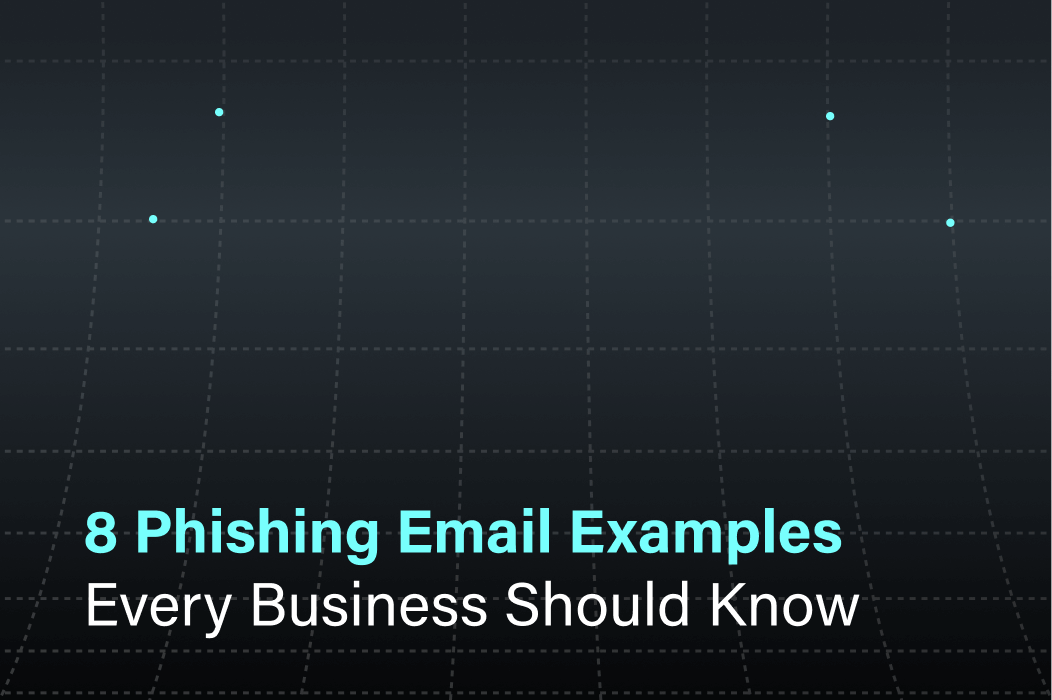Phishing email examples aren’t limited to obvious spam or outdated scams. Today’s phishing emails are crafted with precision, targeting employees using convincing branding, fake system alerts, and impersonation of executives or trusted vendors. These attacks are designed to bypass traditional filters and trigger action through urgency or fear.
This article explores eight real-world phishing email examples that reflect the most common and damaging tactics used against enterprise organizations. Each scenario includes actionable advice to help security leaders strengthen defenses and educate their teams effectively.
1. Executive Impersonation Attack
One of the most dangerous phishing email examples is the executive impersonation attack. In this scenario, the attacker pretends to be the CEO or another senior leader, often requesting money transfers, credentials, or sensitive data.
These phishing emails often bypass suspicion because they mimic internal email addresses and use urgent language. Staff may comply without question if the request appears to come from leadership.
To protect against this tactic, enforce strong verification procedures. Any request involving money, access, or documents should be confirmed through a second channel, such as a phone call or messaging app.
Learn how to protect executives from targeted email threats (opens in new tab) and train employees to spot suspicious requests from leadership.
2. Customer Support Spoof
Customer support impersonation is another common phishing email example. In these scams, attackers pose as the IT helpdesk, Microsoft support, or payment providers like PayPal. The email may say your account is locked, ask for password resets, or for billing confirmation.
These emails succeed because they look official. They often include company logos, standard support phrasing, and a fake urgency.
Train employees to check URLs carefully and confirm any password reset or billing action through the website, not the email link.
3. Brand Imitation Using Lookalike Domains
Some phishing email examples involve attackers spoofing brand names by using lookalike domains. These emails may come from addresses like netfl1x.com or rnicrosoftsupport.com, with just a letter or two altered.
They often include links to fake login pages or documents that ask users to sign in. These attacks are effective because the branding looks familiar, and people act quickly when they think something is wrong with their account.
Enterprises can reduce this risk by using tools that scan for suspicious domains and warn users in real time.
Understand the mechanics of social engineering tactics (opens in new tab) to see how phishing emails exploit familiarity and trust.
4. Vendor Invoice Manipulation
Another phishing email example that targets finance teams is vendor invoice manipulation. Attackers will pretend to be a known vendor and send a realistic-looking invoice with altered payment information. These messages are designed to look urgent and time-sensitive.
Since accounts payable teams are often pressured to process payments quickly, these phishing attacks can succeed even in organizations with security training.
Enterprises should implement verification workflows and alert systems that flag irregular invoice activity.
5. Shared Document Scam
Shared document scams are phishing email examples that appear to come from platforms like Google Drive or Microsoft OneDrive. The email may ask the recipient to view or download a document.
If the employee clicks the link, it may open a fake login page that captures credentials or installs malicious software. Since many companies rely heavily on document sharing, employees are often desensitized to these messages. Training and link-scanning tools can make a major difference.
Schedule a quick demo of AI-driven link-checking technology and see how modern detection stops these threats in real time.
Discover practical ways to counter social engineering scams (opens in new tab) and train your staff with specific phishing email examples.
6. “System Update” or “Password Reset” Alerts
These phishing email examples use fear and urgency to manipulate users. The attacker may claim your password has expired or your account is at risk without a critical system update.
These emails often mimic the look and feel of internal IT notifications, making them difficult to spot.
Train employees to never respond to password reset links in email unless they requested them. Instead, they should go directly to the service provider or IT portal.
Sign up for monthly phishing simulation training to help your team identify these high-pressure phishing email examples.
7. Supply Chain Phishing Attempt
Some of the most damaging phishing email examples come through trusted third-party vendors or partners. An attacker may impersonate a supplier and send a file or payment request to a procurement or operations team.
Because these messages come from "known" sources, they often evade suspicion. But once opened, the consequences can be devastating. Organizations must extend their security training and validation processes beyond internal teams to include vendors and supply chain contacts.
8. Fake Security Compliance Notice
These phishing email examples pretend to come from compliance officers or regulators. The attacker might say your company is out of compliance or facing a fine unless immediate action is taken.
The message may include a link to "submit documents" or "verify compliance status," which actually steals sensitive information or login credentials. To protect against this, educate employees about how real compliance alerts are issued. Use internal channels to validate any email claiming to come from a regulatory body.
Identify Phishing Attempts with Doppel
These eight phishing email examples give enterprise security leaders a clear playbook for identifying and responding to common attack types. They go beyond generic spam and reflect the targeted, well-crafted tactics that attackers use against businesses.
Organizations can significantly reduce risk by applying verification procedures, employee training, and technical defenses. A small change can make a big difference in your company’s overall security posture.
Bolster your email security with our Brand AbuseBox (opens in new tab) and Employee AbuseBox (opens in new tab) solutions and stop phishing threats before they can endanger your brand, customers, and employees.



